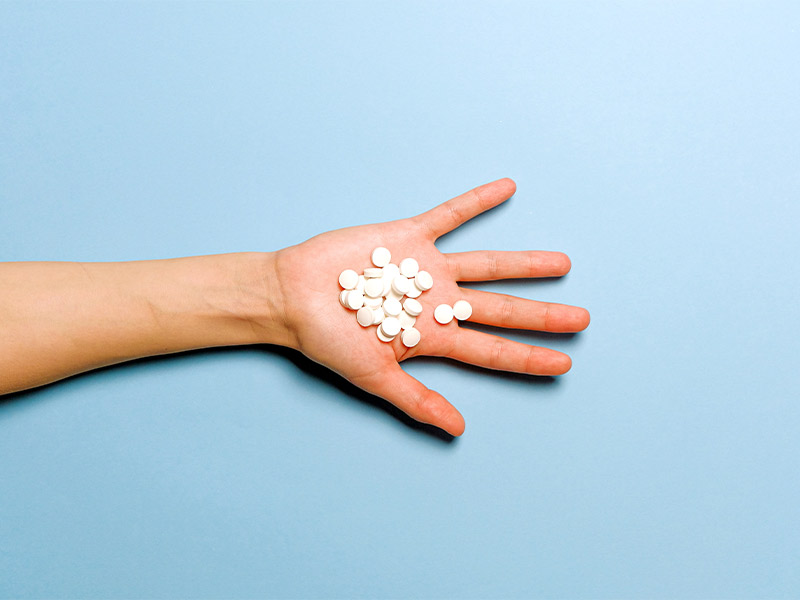Opioid withdrawal is a dangerous medical condition caused by the ending of opioid use that can last anywhere from 48 hours to 7 days depending on the severity of use.
If someone you love is struggling with an opioid use disorder, you may be wondering how long the withdrawal process will last.
It’s important to understand that there is no one-size-fits-all answer to this question—the length of time withdrawal symptoms last can vary depending on a number of factors, including the severity of the addiction and the individual’s physiology.
However, in general, most people who go through withdrawal from opioids can expect to experience symptoms for a period of several days to a week.
While the initial withdrawal period may not be pleasant, it is important to remember that it is only temporary. Withdrawal is often one of the biggest barriers to recovery, but it is also a necessary and crucial step on the road to sobriety.
If you are wondering how long opioid withdrawal will last for your loved one, here is what you need to know.
What Are Opioids?
Opioids are a type of medication used to relieve various aches and pains, as well as to treat chronic pain. These medicines work by binding onto the brain’s opioid receptors, thus reducing how we perceive pain. There are both natural and man-made (synthetic) opioids.
Natural opioids, such as morphine, are derived from the opium poppy plant. Synthetic opioids, such as fentanyl, are man-made and designed to mimic the effects of natural opioids. Both are considered prescription opioids.
While opioids do a great job of relieving pain, they also come with a risk of serious side effects, including potential addiction. It is this risk of addiction that carries withdrawal symptoms when patients try to stop taking the medicine.
How Long Does Opioid Withdrawal Last?
How long does opioid withdrawal last? This is a question that many people who are addicted to opioids ask. Unfortunately, there is no easy answer. The duration of withdrawal can vary depending on a number of factors, including the type of opioid you are addicted to, the period of time you have been using opioids, and your overall health.
That said, most people who go through opioid withdrawal will experience physical symptoms for a period ranging from 48 hours to 7 days. The intensity of the symptoms may vary, but they typically peak within the first few days after stopping the use of opioids. After that, the symptoms will gradually subside over the course of several days.
What Are the Symptoms of Opioid Withdrawal?
Opioid withdrawal symptoms can be uncomfortable and difficult to cope with. Symptoms may include:
- Anxiety
- Depression
- Irritability
- Muscle aches and pains
- Nausea and vomiting
- Runny nose
- Low or elevated blood pressure
- Diarrhea
- Insomnia
- Sweating
- Drug craving
- Fever
- Shaking or tremors
Withdrawal symptoms typically peak within 24 to 48 hours after the last dose of an opioid, but can last for several weeks. Some people may also experience what is known as post-acute withdrawal syndrome (PAWS), which includes symptoms such as anxiety, depression, and insomnia that can persist for months or even years after stopping opioids.
Treatment for PAWS may include antidepressants, anti-anxiety medications, and counseling. If you or someone you know is struggling with opioid addiction, please seek help from a medical or mental health professional.
There are many resources available to help those struggling with addiction, including Narcotics Anonymous (NA), Alcoholics Anonymous (AA), and sponsors. There are also many detox and rehabilitation facilities that can provide treatment for opioid addiction.
What Happens During Withdrawal?
When someone starts to withdraw from opioids, they may feel:
- Anxious
- Stomach pain
- Nausea and vomiting
- Sensory sensitivity
- Hallucinations
- Diarrhea
- Muscle aches and pains
- Sweating
- Seizures
- Trouble sleeping
These symptoms can be mild or severe, depending on how much someone has been taking and for how long. People who have been taking opioids for a long time or in high doses may have more severe withdrawal symptoms.
Opioid withdrawal can be life-threatening, and very uncomfortable. The good news is that there are treatments available to help people through it.
If you or someone you know is going through opioid withdrawal, there are a few things you can do to ease the symptoms:
- Drink plenty of fluids. This will help to prevent dehydration from diarrhea and vomiting.
- Eat when you can. Small, frequent meals are best.
- Avoid caffeine, alcohol, and other drugs. These can make the symptoms worse.
- Get rest when you can. Withdrawal can be exhausting.
- Try over-the-counter medicines like ibuprofen or acetaminophen for muscle aches and pains.
Withdrawal is only one part of the journey to recovery. After withdrawal, you will still need to get treatment for your addiction. Treatment can help you build a life in recovery that is happy and healthy.
Opioid Withdrawal Timeline
The withdrawal process from opioids can be difficult and uncomfortable. Here is a general timeline of what you can expect:
Day 1-2: You will likely feel flu-like symptoms such as nausea, vomiting, diarrhea, and body aches. You may also experience anxiety and irritability.
Day 3-5: Symptoms will peak during this time and may include severe cramping, sweaty palms and feet, insomnia, and depression.
Day 6-10: Symptoms will start to improve but may still include fatigue, mood swings, and difficulty concentrating.
Second Phase Withdrawal Symptoms
Second-phase withdrawal symptoms can be more intense and difficult to manage than first-phase symptoms. They typically last for several weeks or longer, and may include:
- Anxiety disorders
- Depression
- Irritability
- Insomnia
- Fatigue
- Difficulty concentrating
- Excessive sweating
- Headaches
- Muscle aches and pains
- Stomach cramps
- Diarrhea or constipation
- Nausea or vomiting
If you are experiencing any of these symptoms, it is important to reach out for help from a medical professional or addiction specialist. Withdrawal can be a dangerous process, but with the right support, it is possible to successfully recover from addiction.
Can Opioid Withdrawal Cause Death?
Opioid withdrawal can be life-threatening, and it is dangerous to attempt at home. In rare cases, severe withdrawal symptoms can lead to dehydration and electrolyte imbalances, which can be dangerous. If you are concerned about your risk of developing severe opioid withdrawal symptoms, please speak to a medical professional.
Getting Help from an Opioid Detox and Treatment Center
If you know someone who is struggling with opioid addiction, or physical dependence to opioids, you may be feeling hopeless and alone. But there is help available. Opioid detox and treatment centers offer a safe, comfortable environment for your loved one to detox from opioids and begin their journey to recovery.
At Long Island Rehabs, we understand how difficult it can be to break free from opioid addiction. That’s why we offer comprehensive detox and treatment services designed to help your loved one every step of the way.
If you are struggling to help your loved one on your own, contact us today. With professional help, your loved one can detox safely, begin their recovery journey, and start rebuilding their life.


